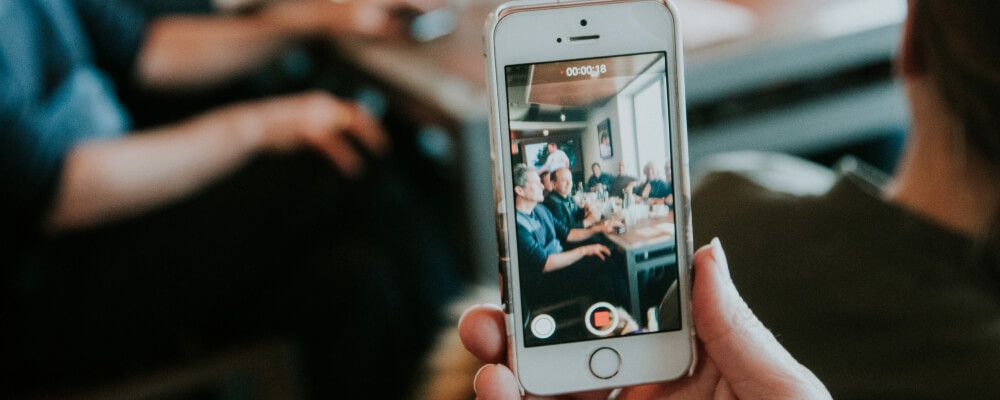If you’re just starting out in video shooting or you need to shoot a one-time video that wouldn’t look chippy – we suggest you some easy tips how to do it in a simple way.
Apps
First of all, you’ll need your smartphone, but don’t be in a hurry to turn the usual "camera" mode on. The software must be pimped.
For example, OpenCamera for Android and ProCamera or FilmicPro for iPhone can open access to functions that won’t be found even in a pro-mode of the common “camera” application.
Settings
You should turn off all automation, which we mostly associate with unprofessionally taken shots.
Our vision reacts much softer and smoother to what is going on than does the processor in the cell phone.
We also have a multiaxial stabilizer in our body that allows our head’s position to remain stable in space, therefore we see the world steady, without shaking, even when running.
Exposure
The first thing we need to disable is AEB (Automatic Exposure Bracketing).
Your smartphone camera always chooses an average exposure, which is totally wrong. The problem is that when you move the camera, the brightness’ change might ruin the shot. Moreover, you can use some tricks to clear the noise.
For example, you shoot 30 frames per second. Select Shutter Speed 1/60 and the lowest ISO, usually it’s 100. Those are perfect shooting settings.
The exposure time of 1/(2*fps) provides natural cinematic Motion Blur with minimal noise.
If the shot exposure is correct – you can start shooting. If it’s overexposed you need to lessen Shutter speed – 1/120, 1/200, etc. If the shot is underexposed – increase ISO to 200, 300, 400, etc. or use extra lighting.
Autofocus
The second feature we don’t need is autofocus hunting.
In cinematography, there is a special person setting the focus manually while on your smartphone it automatically concentrates on the contrasts around the center, sometimes it recognizes the faces but mostly works unpredictably.
It would be best to focus by tapping on the screen and start recording with a fixed focus distance.
If technically possible you can use focus tracking when you select a subject you want to shoot and let the camera track it while you hold the composition.
White Balance
The third thing is to set up white balance manually.
While panning in auto mode tone changes look just as silly as automatic exposure.
White balance is measured in Kelvin degrees and usually adjusted by a piece of white paper or using preset modes (Sunny, Cloudy, Tungsten, Halogen etc.).
Something else
Now make sure that you have set the maximum bitrate that your phone can shoot and memory card can store (test it empirically).
Also, there is Focus peaking feature (areas that are in focus are highlighted on the display which might be important for small screens) and Zebra tool (black and white striped patterns showing overexposed areas of the image) in apps. These tools are for adjustments only; they won’t appear in a final video.
Sound
The audio matters as much as the video.
For those on a budget, we suggest using a plug-in headset for voice recording. When shooting yourself with a smartphone you can use its microphone just as if you’re talking on the phone but you don’t need to put the earphone in the ear, just let it hang on the neck.
Stay steady
Steady your shooting. A simple tripod with a clamp for your phone would cost less than $15 at Amazon but sometimes you can use techniques that don’t cost a dime.
Fix your phone with adhesive tape or a bookend when shooting yourself.
Stand right when you shoot another subject – one foot a bit in front of the other; this helps you stand steadier.
Never hold the camera with one hand – use both and hold both elbows near the chest; this prevents accidental shaking of the camera.
Lean on something. If you’re sitting put your smartphone on your knee or rest one hand on it. Do everything you can to reduce camera shake.
Editing
Here are some editing tips for last.
Use any software you like. Each program (even free) provides necessary editing functions.
Don’t use embedded effects. Nothing reveals an amateur video like software templates in a project.
Utilize hard cut without any type of transition, sometimes Cross Fade or Fade can be used.
Break the rules
Remember: there are no strict rules in filmmaking but your viewers’ interest. If your video is watched to the end without fast-forwarding, that’s half the battle.






